The final Theme and set of bowing variations in Feuillard is No. 36. This page deals with string crossings involving four strings. There are double stops, chords, various bowings, articulation issues, and different strokes. I use No.36 to reinforce many of the concepts from the earlier pages, and especially the “twist motion”. The student should be aware of how the left arm moves in tandem with the string crossings, so that the elbow is higher on the C-string and lowest on the A-string. The student must also be aware that the contact point needs to change when going from the lower strings to the higher strings. The “rule” is:
“The Higher the String, the Lower the Contact Point”
If we don’t pay attention to the contact point, the intonation will suffer (e.g. what I call “bow intonation”). In other words, the contact point must get lower when going to the higher string. Otherwise the notes may sound like they are out of tune when the real problem might be that the contact point is too high and the bow is bending the string, thus producing a change in the pitch.
I first ask the student to play the Theme of No.36 as chords, paying attention to the intonation. The bottom double stop is played like a pickup to the top double stop. If a pianist were to play an accompaniment, he would come in with the top part of the chord.
The videos in this blog, and subsequent blogs dealing with No. 36, all feature my student George. He has been my student for two years.
Theme No. 36:

Variation #1:

The goal in Variation #1 is to use the full bow, with the twist motion helping to make it easier to get weight into the lower strings and to be able to bow out (away from the body) as we get to the tip, especially on the A-string. One must always find the most relaxed place at the frog, with the muscles releasing tension. The Left/Right Motion is again helpful with getting a good sound at the tip.
Variations #2 – #4:
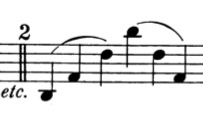
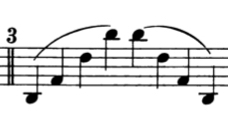
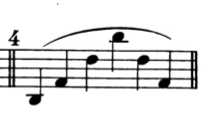
The goals of Variations #2-#4 are all similar: full bow, twist motion, contact point, core sound:
Variation #5:
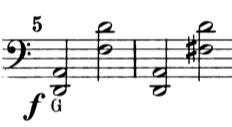
This variation, and the next several, all deal with double stops in various ways. One must always monitor the bow angle going to the tip to make sure that the sound is consistent. The most efficient motion of the arm involves going “out”, rather than going “up” to the next higher string. This way the angle is correct, and we are also not fighting gravity. Instead of an “up” motion we use an “out” motion of the arm.
Variation #6:
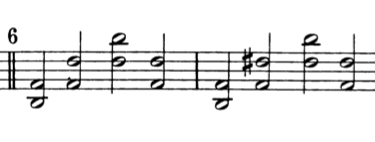
Another way to save energy as you go out to the tip is to keep the string vibrating through “friction” and bow speed rather than using weight. The sound should continue spinning out. However, one must be careful to listen well so that the sound does not diminuendo as you get further out.
Variation #7:
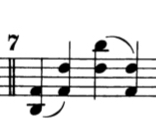
These double stops are tricky for the left hand – especially the top parts of the chords. We must be careful not to press down on the string with the left hand, using arm weight rather than force. The fourth finger is usually the weakest finger, and many people need some isometric exercises to help strengthen it and keep the joints from collapsing. This theme has a lot of 5ths on the top, so it is worth spending some time doing exercises for the fourth finger playing 5ths: e.g. scales in fourths and fifths, and shifts using these intervals.
Variations #8 and #9:


Needless to say, George plays each one of these variations in its entirety during the lesson. I am just saving time (and bandwidth!) by cutting them short and combining several here, since they all deal with the same issues.
Next week we will continue our journey through Feuillard No. 36 with Variations #10 – #29 on string crossings over four strings. Many of these variations are about sustaining the sound with legato or detaché strokes.